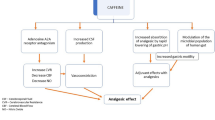Abstract
Previous studies suggest a role of scalp perivascular structures in at least a substantial number of migraineurs. This study aimed to evaluate the presence of pressure-painful scalp arteries in patients with migraine. Pressure-painful points on scalp arteries were searched for in 100 consecutive patients affected with migraine, 84 females (F) and 16 males (M), 83 without aura (70 F) and 17 with aura (14 F), and in 30 healthy matched subjects. The examined arteries were, bilaterally, the superficial temporal and its frontal branch, the zygomatico-orbital, the occipital and the posterior auricular. We examined 75 patients interictally: 60 (80.0%) reported one or more (mean per subject 3.7 ± 1.9) pressure-painful arteries and 15 (20.0%) reported none. In the 30 controls, pressure-painful arteries were present in only nine (30.0%, mean per subject 1.3 ± 0.7), with highly significant differences (p < 0.001). During a migraine attack, of the 51 patients examined, 45 (88.2%, 38F) reported one or more (mean 3.8 ± 2.1) pressure-painful arteries and six (11.8%) reported none. Both when during an attack and interictally, the arteries most frequently involved were the occipital, the frontal branch, and the temporal. Scalp arteries are frequently painful to pressure in migraineurs, especially in females, both during headache and interictally. Painful arteries suggest hypersensitivity of periarterial nociceptive afferents, which is perhaps due to the local presence of endogenous algogenic products, as suggested by our previous studies.

Similar content being viewed by others
Abbreviations
- STA:
-
Superficial temporal artery
- F:
-
Female/s
- M:
-
Male/s
- GON:
-
Great occipital nerve
References
Jensen K, Tuxen C, Olesen J (1988) Pericranial muscle tenderness and pressure-pain threshold in the temporal region during common migraine. Pain 35:65–70
Göbel H, Weigle L, Kropp P, Soyka D (1992) Pain sensitivity and pain reactivity of pericranial muscles in migraine and tension-type headache. Cephalalgia 12:142–151
Jensen K (1993) Extracranial blood flow, pain and tenderness in migraine: clinical and experimental studies. Acta Neurol Scand Suppl 147:1–27
Anttila P, Metsähonkala L, Mikkelsson M, Aromaa M, Kautiainen H, Salminen J, Viander S, Jäppilä E, Sillanpää M (2002) Muscle tenderness in pericranial and neck-shoulder region in children with headache: a controlled study. Cephalalgia 22:340–344
Calandre EP, Hidalgo J, García-Leiva JM, Rico-Villademoros F (2006) Trigger point evaluation in migraine patients: an indication of peripheral sensitization linked to migraine predisposition? Eur J Neurol 13:244–249
Giamberardino MA, Tafuri E, Savini A, Fabrizio A, Affaitati G, Lerza R, Di Ianni L, Lapenna D, Mezzetti A (2007) Contribution of myofascial trigger points to migraine symptoms. J Pain 8:869–878
Fernández-de-las-Peñas C, Cuadrado ML, Arendt-Nielsen L, Pareja JA (2008) Side-to-side differences in pressure pain thresholds and pericranial muscle tenderness in strictly unilateral migraine. Eur J Neurol 15:162–168
Fernández-de-las-Peñas C, Madeleine P, Cuadrado ML, Ge HY, Arendt-Nielsen L, Pareja JA (2009) Pressure pain sensitivity mapping of the temporalis muscle revealed bilateral pressure hyperalgesia in patients with strictly unilateral migraine. Cephalalgia 29:670–676
Jansen I, Uddman R, Hocherman M, Ekman R, Jensen K, Olesen J, Stiernholm P, Edvinsson L (1986) Localization and effects of neuropeptide Y, vasoactive intestinal polypeptide, substance P, and calcitonin gene-related peptide in human temporal arteries. Ann Neurol 20:496–501
Jansen I, Uddman R, Ekman R, Olesen J, Ottosson A, Edvinsson L (1992) Distribution and effects of neuropeptide Y, vasoactive intestinal peptide, substance P, and calcitonin gene-related peptide in human middle meningeal arteries: comparison with cerebral and temporal arteries. Peptides 13:527–536
Cianchetti C, Hmaidan Y, Finco G, Ledda MG (2009) Scalp periarterial saline effect on migraine attacks: percentage of positive responses and relation to type of pain. J Neurol 256:1109–1113
International Headache Society (2004) The international classification of headache disorders: 2nd edition (ICHD-II). Cephalalgia 24(suppl 1):1–160
Fernández-de-las-Peñas C, Arendt-Nielsen L, Cuadrado ML, Pareja JA (2009) Generalized mechanical pain sensitivity over nerve tissues in patients with strictly unilateral migraine. Clin J Pain 25:401–406
Cianchetti C, Hmaidan Y (2007) Saline pomphus around scalp arteries can block migraine pain. J Neurol 254:1746–1747
Cianchetti C (2010) Capsaicin jelly against migraine pain. Int J Clin Pract 64:457–459
Hmaidan Y, Cianchetti C (2006) Effectiveness of prolonged compression of scalp arteries on migraine attacks. J Neurol 253:811–812
Cianchetti C, Cianchetti ME, Pisano T, Hmaidan Y (2009) Treatment of migraine attack by compression of temporal superficial arteries using a device. Med Sci Monit 15:185–188
Cianchetti C, Serci MC, Pisano T, Ledda MG (2010) Compression of superficial temporal arteries by a handmade device: a simple way to block or attenuate migraine attacks in children and adolescents. J Child Neurol 25:67–70
Shevel E (2007) Vascular surgery for chronic migraine. Therapy 4:451–456
Pearce JMS (2008) Greater occipital nerve block: a diagnostic test? Adv Clin Neurosci Rehab 8:15–17
Bovim G, Sand T (1992) Cervicogenic headache, migraine without aura and tension-type headache: diagnostic blockade of greater occipital and supra-orbital nerves. Pain 51:43–48
Acknowledgments
Dr. Mary Groeneweg revised the English language of the manuscript.
Conflict of interest statement
None.
Author information
Authors and Affiliations
Corresponding author
Rights and permissions
About this article
Cite this article
Cianchetti, C., Ledda, M.G., Serci, M.C. et al. Painful scalp arteries in migraine. J Neurol 257, 1642–1647 (2010). https://doi.org/10.1007/s00415-010-5582-8
Received:
Revised:
Accepted:
Published:
Issue Date:
DOI: https://doi.org/10.1007/s00415-010-5582-8




